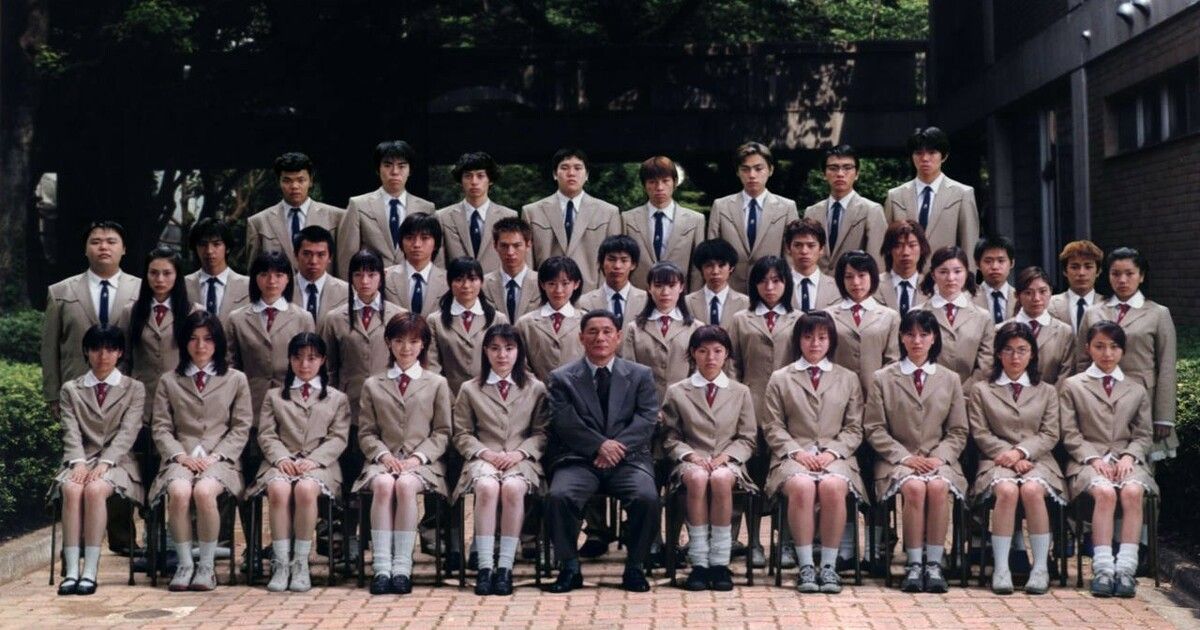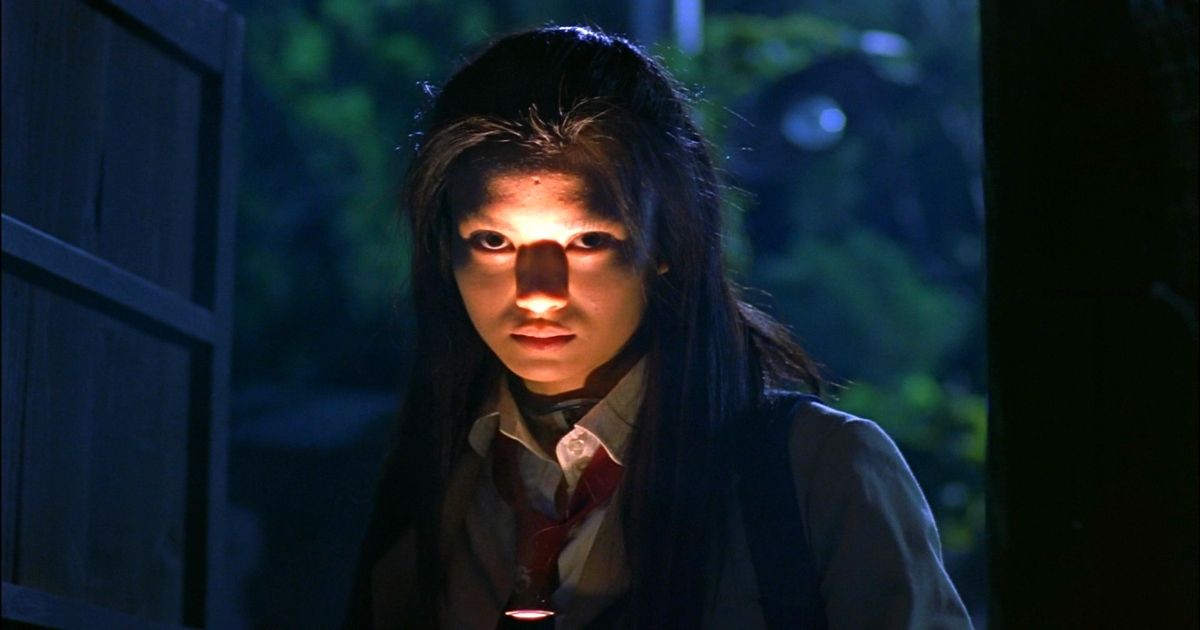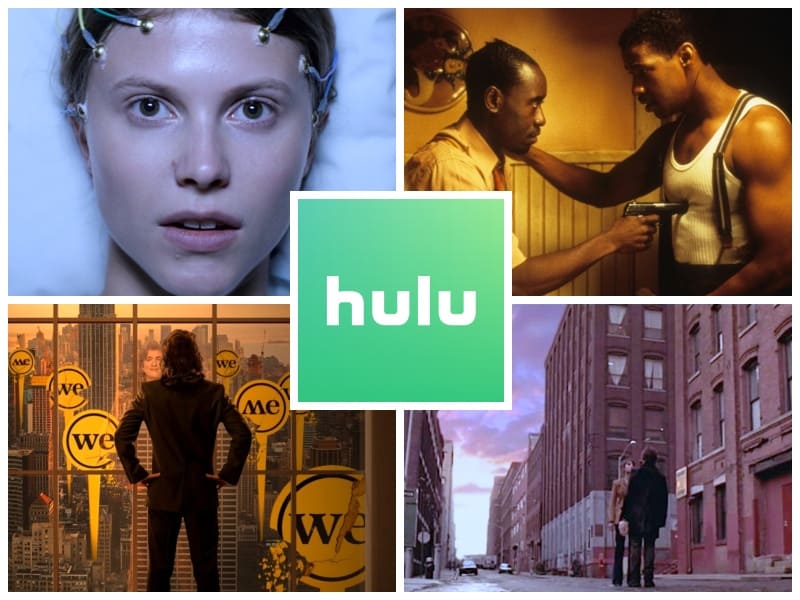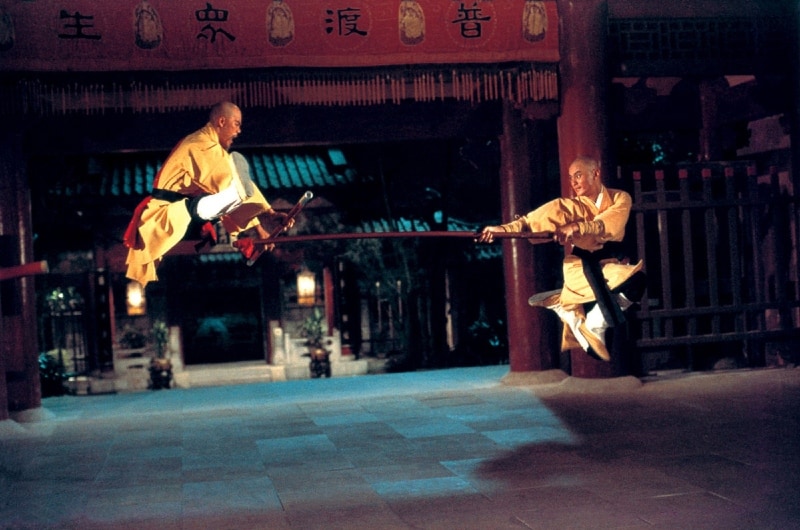#Looking Back at Kinji Fukasaku’s Brutal Film and its Impact

Table of Contents
“Looking Back at Kinji Fukasaku’s Brutal Film and its Impact”
Originally a passion project of director Kinji Fukasaku‘s son, Kenta Fukasaku, Battle Royale dredges deep into his memories of a post World War 2 Japan, and manages not only to be a fun and exciting action movie, but also a deeply disturbing treatise on what people can become in a desperate situation. It toes the line between camp and serious drama in a way that is so rarely seen in modern films. Released more than 20 years ago, Battle Royale is just as relevant today as it ever was.
The Legacy of Kinji Fukasaku
Kinji Fukasaku, who at the time of shooting Battle Royale was almost 70, was a risky choice to make a film about teenagers. Kinji was considered one of the front-runners of the Japanese New Wave of cinema. He had mostly done Yakuza-themed films throughout his career, as well as a historical drama, and a fantasy film. His filmmaking ways, once considered genre-defining and mainstream, had started to fade a bit in popularity. It was his son, and screenwriter, Kenta Fukasaku, who first approached him about Battle Royale, a novel by Koushun Takami. Initially only reaching out for advice, Kenta would find himself out of the director’s seat as Kinji found himself personally connecting with the story in a way his son had not.
Although Kinji would opt to direct the movie himself rather than his son, it still became a cooperative project for the two of them. It would go on to get 9 nominations at the Japanese Academy Awards, and win three of them. Tragically, it would be the last film that Kinji Fukasaku ever made. While he was already considered one of the best filmmakers out of Japan – this movie certified him as an all-time great by taking material that seems made for a different generation and having the skill to make it relatable and engaging to any audience member, regardless of age or nationality. He bore his way into the roots of what it means to be young in this world.
Inspired By a Harsh Reality
At his age, Kinji Fukasaku might not have been able to relate to the modern life of a 15-year-old, but he was all too familiar with the drama that these characters would experience. In an interview, Kinji famously had this to say about his connection to the story: “In July 1945, we were caught up in artillery fire. Up until then, the attacks had been air raids, and you had a chance of escaping from those. But with artillery, there was no way out. It was impossible to run or hide from the shells that rained down. We survived by diving for cover under our friends… After the attacks, my class had to dispose of the corpses. It was the first time in my life I’d seen so many dead bodies. As I lifted severed arms and legs, I had a fundamental awakening … everything we’d been taught in school about how Japan was fighting the war to win world peace, was a pack of lies. Adults could not be trusted.”
The idea that adults can’t be trusted permeates itself into the very DNA of the film. It’s an idea that goes beyond language and generation, and something that almost anyone can or has been related to in the past. It’s a hauntingly tragic way to connect to the characters, but it explains why this film seems so vibrant and alive despite the fact that the director was nearly 60 years older than most of his cast.
Fighting to Get Audiences to See It
Initially, the over-the-top violence featuring teenagers met quite a bit of resistance in Japan. It was given an R15+ rating and was seen as cruel and amateur by other critics. Movies getting harsh ratings isn’t a new practice, but Kinji feared that the audience he made the film for might not even be able to see it at all. Many thought the film might incite a wave of teenager violence across the country, as critics feared that youth might try and emulate what they were seeing on screen. Fukasaku knew better than this, thankfully, and was able to refute most of these baseless claims. Despite younger audiences not being able to see this movie that was created for them – the director publicly encouraged them to sneak into theaters to see it themselves. This may have been a bit of tongue in cheek, but at the least it helped solidify this movie as ‘cool’ and something that people were afraid to miss.
It didn’t take long for audiences to warm up to the movie. Only a shoestring budget of 4.5 million – Battle Royale would go on to make more than $30.6 million over the course of its multiple theatrical releases. Its impact beyond the silver screen goes even deeper. With modern movies setting unimaginable landmarks, it’s easy to forget how successful a smaller film can be outside of box office results.
A Cult Following
Movies from Japan and South Korea are very popular right now, and there’s been some absolute classics recently. Getting a movie like this over to the states wasn’t always easy. While the movie may have been fighting censors upon its release, it would find a home in the digital media space well after its release. European audiences were able to see the film in theaters, but it wouldn’t officially make its way to the US until 2002, but wasn’t widely released until 2011.
Thanks in some small part to a glowing review by iconic film-maker Quentin Tarantino, Battle Royale hasn’t left the collective consciousness of the movie world ever since it was widely available. It’s inspired countless other movies, and it’s frenetic and fast-paced style has made it into a cult classic that still gets shown today. Long removed from the tragic inspiration that director Kinji Fukasaku pulled from, Battle Royale has made a long and lasting impact, even beyond what Kinji thought possible. Good movies tell a story that resonates when they come out – but great movies tell a story that resonates forever. With other films from non-English-speaking countries finding mainstream success in the West, like Parasite and Roma, one can’t help but feel that Battle Royale helped open up the minds of film-goers along the way.
If you liked the article, do not forget to share it with your friends. Follow us on Google News too, click on the star and choose us from your favorites.
For forums sites go to Forum.BuradaBiliyorum.Com
If you want to read more Like this articles, you can visit our Social Media category.








